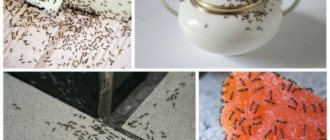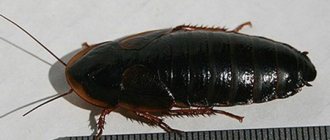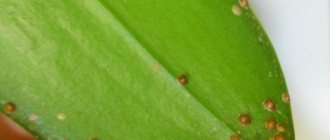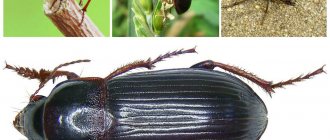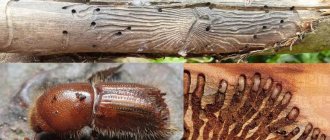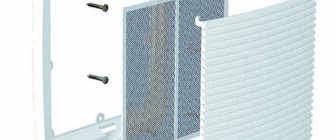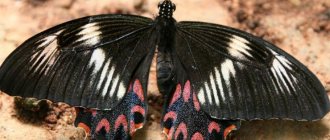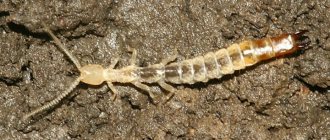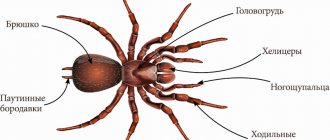Where do bugs come from in an apartment?
When the owners notice that black beetles have appeared in the room, despite the fact that there is no disorder in the room and the cleaning was carried out on time, the question immediately arises where they could come from.
Ways of appearance of beetles in an apartment:
- cracks in walls, window frames, into which small insects can easily crawl;
- ventilation shafts and openings in which protective nets are not installed;
- windows and vents, open for ventilation, can become an “entrance door” through which flying insects fly into the apartment;
- through risers of sewer and water pipes;
- black beetles appear in apartments in the summer, clinging to people’s shoes or clothes, thus penetrating the living rooms and kitchen;
- from a neighboring basement or attic.
Reasons for appearance
Any insects enter the house for a specific purpose. They are attracted to new territories by the opportunity to find a source of food, a comfortable habitat and a place to breed their offspring. Small black bugs found in the apartment are no exception.
You cannot think that well-kept premises, high-quality repairs, and maintaining cleanliness will save you from unpleasant guests. A fertilized female entering a house completely by accident can quickly create a whole colony of pests. And then the question of where the black beetles came from fades into the background. You need to decide how to get rid of them.
Bugs in the apartment
Photos and names of black beetles
You can determine exactly what the black beetle in the house is called by its appearance and size, as well as its location. They can settle both in food and in furniture, carpets or wooden structures and walls.
The most common black beetles, which sometimes settle in an apartment or private house, are beetles or flour beetles. They received their second name because they prefer to eat cereals and other bulk products.
In total, there are 3 types of Khrushchak:
- large beetles - differ in their length (up to 13 mm);
- small – have a size of up to 3.6 mm;
- black - distinguished by black color.
Black bugs in the apartment
In addition to the flour beetle, there are other types of small black bugs in the apartment:
- skin beetles - small black insects up to 4 mm in size that feed on fur and leather products, paper from books, indoor plants and food (flour, nuts, cereals, meat, etc.) - live in closets, old clothes, crevices of furniture; dangerous because they can carry infections and helminths;
- carpet beetles - they settle in beds and carpets, feeding on old peeling human skin, hair and crumbs; they can render things unusable and also cause allergies in some people;
- fleas are small jumping parasites that bite painfully and can carry infection; they often appear in homes where cats and dogs live.
Insect prevention measures
To prevent bugs from entering the house, you need to:
- Do not leave windows open without mosquito nets.
- Seal all cracks in the floor, baseboards, and near pipelines.
- Do not create large reserves of cereals and flour. Store them in a glass container with a tight-fitting lid.
- After bringing bulk products from the store, place them in the freezer for several hours.
Periodic checking of seeds, flour, and dried fruits for the presence of bugs will help to detect them in time and take measures to destroy them.
Big Khrushchak
According to the biological classification, Khrushchev beetles belong to the Darkling beetle family, numbering 11 species, of which only 3 are common in Russia and Moscow.
Khrushchak is a large black beetle up to 1.8 cm long, its body is flattened, and there are only 6 legs (3 pairs). The color of the body is black-brown and shiny, the abdomen has a reddish tint. Females lay 200 eggs. into the nest. The pest larva (popularly called a mealworm) is larger in size, up to 2.5 cm, and brownish-yellow in color. It feeds on grain, flour and bran. As the larva grows, it undergoes 4 molts.
The flour beetle chooses as habitats in the apartment those that are located near its favorite food. In nature, they prefer to live in tree hollows or rotten parts. The beetle's main diet consists of animal food (the corpses of small mammals and insects) and plant food.
Important!
When settling in an apartment, beetles look for food in the form of grain, flour, cereals or bran. They spoil food supplies, contaminating them with their excrement, skins from larvae and dead insects. In a short time, black bugs can multiply and infest all your kitchen cabinets and drawers.
Big and small Khrushchak
Why are they dangerous?
The piercing-sucking mouthparts of fleas are adapted for piercing the skin of animals and sucking blood. After a bite, small red dots remain on the host’s body, which constantly itch and hurt. Protein enzymes that fleas inject into bite sites can cause allergic reactions in the form of redness, itching, irritation, and skin rash.
Flea bite.
But the greatest danger of fleas is that they carry pathogens of infectious diseases. Any bite can cause infection with hepatitis, tuberculosis, diphtheria, typhoid, anthrax, encephalitis, plague or helminthiasis.
Small Khrushchak
The small flour beetle has a brown or red body color and causes considerable damage to the food supply of a person in an apartment. It is widespread in Russia and Ukraine, where it often causes spoilage of grain in granaries, mills and other places where bulk products are stored.
The red-brown beetle is smaller in size (up to 3.6 mm), but it loves to settle in various food supplies in the apartment: flour, nuts, dried fruits and other plant fruits.
On a note!
Unlike the large Khrushchak, the small one has wings and is able to fly. The males of such a flying insect have an abdomen rounded at the end and covered with hairs. In females, the tip of the body is bare; they are capable of laying up to 1 thousand eggs.
The larva of the small beetle has a flat shape and a length of up to 7 mm, the body color is yellow-brown (light or dark shades), the head is flattened. The body is covered with hairs and ends with 2 spines. The pupa is painted light yellow, and its body is shiny and completely naked. The development cycle of the flying black beetle is 20-120 days, and the growth rate directly depends on the amount of food and living conditions.
Insects similar to cockroaches
If you find tiny black beetles crawling around your home, don't panic. If you and your pets are not suffering from bites, the pests are probably not bed bugs or fleas.
Carpet beetles
An adult bug will not harm your home. Unfortunately, the same cannot be said about their larvae. Carpet beetle larvae can eat holes in rugs, curtains, upholstery, clothing and books. You may not even know you have an infestation until you notice the damage caused by pests. If you notice anything suspicious, roll up your sleeves and clean it. Thoroughly clean out the dust and cobwebs that protect these pests. Then take the clothes out of the closet and wash everything or send it to the dry cleaner. Finally, treat your carpets with an insecticide, boric acid, or diatomaceous earth to kill any remaining larvae.
Although carpet beetles may eat wool, silk, or flakes, they do not bite and will not cause structural damage to your home. If they leave a black or brown smear when crushed, you most likely have carpet beetles.
They feed on carpets and similar foods and reproduce slowly.
Carpet beetles are only 2-3 millimeters long - about the size of a pinhead - and vary in color. Some are black or dark enough to appear black when observed by the human eye. Others may be spotted, with brown and black spots on a lighter background. Like many other beetles, they are round or oval and convex, like ladybugs. Carpet beetles are covered in tiny hairs that are difficult to see unless you look at them under magnification.
Carpet beetle larvae are elongated and appear fuzzy or hairy. They leave behind their shed skins so you may find them in infested pantries, cupboards or drawers.
Black Khrushchak
The 3rd type of beetle has a darker, almost black body color, the size of which is up to 5.5 mm. Their body color is matte, the color varies from black to brown.
Unlike other species, small black beetles prefer to live only in heated rooms. By settling in the kitchens of people's houses and apartments, they are capable of ruining not only food products, but also glue, fabrics (knitwear and nylon) and other products. They are found much less frequently than their large and small counterparts. The larvae grow to a size of 12 mm.
Important!
However, once settled in an apartment, a colony of Khrushchak insects can cause a lot of harm. By feeding on the excrement of other pests (mice and rats), they can become carriers of infections and worms.
Black Khrushchak
Professional extermination of beetles
Various types of beetles can infest homes. It is often quite difficult to determine which type of beetle has settled. Moreover, in each case, the control methods are different - one drug is effective against one type of beetle, the second - against another .
Therefore, if you cannot cope with the beetles on your own, you should contact a specialized insect extermination company - you can see the phone numbers on the page.
Specialists will be able to accurately determine the type of beetles that are bothering the residents of the house and quickly get rid of these insects . Particularly difficult to control are wood-damaging beetles (their species is difficult to pinpoint) and book lice. There is no need to hesitate - even if most beetles do not directly threaten human life, they can cause serious damage to property.
The help of specialists is especially necessary if the beetles have managed to infest the entire house, and complex treatment is required to destroy them. Also, do not hesitate if you suspect that there are carpet beetles in the house - such a neighborhood poses a serious threat to the health of people and animals.
Methods to combat bugs
If black beetles appear in the apartment, then first you should determine their type based on external signs.
Depending on the identification, you can use various control methods to help get rid of black beetles:
- Carpet beetles and carpet pests should be combated by treating carpets and furniture; first they must be wiped with a sponge soaked in a soap solution, and then with a vinegar solution; a day after treatment, carpets and furniture should be vacuumed well, and the contents of the bag should be thrown away, as there may be insect eggs in there;
- to destroy flour beetles, it is necessary to carefully sort through all reserves of bulk products (flour, cereals, sugar, etc.); if they are found, everything must be thrown away, because they are not suitable for consumption;
- inspect the contents of all cabinets for small black or red bugs, then make a solution of 1 tbsp. l. soda per 1 liter of water and treat all surfaces and shelves inside the cabinets, wash the dishes using detergents and pour boiling water over them;
- wash all surfaces in the kitchen with a solution of acetic acid or use boric acid powder, which should be rubbed into areas where parasites may live;
- treat the floor covering and baseboards with any aerosol containing an insecticide against insects (Dichlorvos, Combat, Raid, etc.);
- clothes should be boiled or washed in hot water (not lower than +60°C).
On a note!
The procedure for exterminating insects should be repeated 2 times a week for a month, since new generations of bugs will hatch from the laid eggs of insects, which also need to be destroyed.
If the measures taken do not help or there is no time to fight bugs in the apartment for a long time, then it is better to turn to professionals. There are companies that use special preparations to carry out disinfestation (extermination of pests) in any residential premises.
Fighting bugs in the house
How to get rid of it?
As a rule, the appearance of flour pests is noticed when they have already begun to take root in bags of cereals and flour. It will not be possible to get rid of house bugs by preserving contaminated products, since insect eggs will remain in them. Cereals should not be eaten even after calcination. We'll have to throw everything away. But this is not enough. After all, both adult pests and eggs can be found on the walls of kitchen cabinets, behind them and in other places.
Chemicals
The use of chemicals is the fastest and most reliable way to get rid of beetles in an apartment. Aerosols are convenient for targeted use. It is necessary to process not only the cabinets where the food products were located, but also the walls behind them and the baseboards.
To remove bugs, you can also use emulsion concentrates. Dilute them according to the instructions and treat the room with a spray bottle.
When using pesticides, you must not forget about protective measures.
Folk remedies
People have long noticed that small black insects cannot tolerate both low and high temperatures. And if freezing the apartment does not work, then at the dacha this method is quite justified. In an apartment building you can use a steam generator. At high temperatures, not only adults die, but also eggs. Cereals can be calcined in the oven, but if they have been contaminated, then it is useless to do so; you cannot eat them anyway.
Dry bait made from borax, semolina and powdered sugar, placed in small containers in cabinets, will attract pests like a magnet. Once they try it, they won't have long to live.
Mint, lavender, bay leaf, and garlic have repellent properties. Black beetles with wings do not like these smells and will try to leave the apartment. You can use not only plants, but also essential oils, which are applied to cotton pads and placed in kitchen cabinets.
Recommendations for fighting
When starting to fight black insects in an apartment, you first need to get rid of all contaminated products and those that cause suspicion. After that:
- The remaining cereals are calcined in the oven at a temperature of 180–2000C for 15 minutes. The remaining products are placed in the freezer.
- All cabinets and table surfaces are washed with diluted vinegar, citric acid or bleach.
Treatment
- The dishes are treated with soap and soda solution.
- Walls, floors, and baseboards must also be thoroughly wiped with water and a disinfectant.
Only in this case can you be sure that after some time a new generation of pests will not appear.
Bark beetles and other inhabitants of wooden houses
In addition to the above beetles that settle in apartments, there are also specific species that live in a wooden house. Most often, insects enter the house along with contaminated building materials and pose a great danger to all wooden structures and furniture. They are capable of not only destroying valuable property in a short time, but also turning all the walls and structures of a building into dust.
They differ in that their main food is wood:
- bark beetles - a large group of beetles (750 species), the size of the insect is 5-10 mm, in the forest bark beetles carry out sanitary work, destroying rotten trees, and in a wooden house they are considered pests, they gnaw long passages in the wood and destroy it, insect larvae are capable of in a few years “eat” the whole house;
- grinders are long, oblong small bugs, 2-10 mm in size, black or brown in color, they are coleopteran insects, dangerous for wooden structures, furniture, books and cardboard, they also feed on grain reserves, making characteristic ticking sounds; at the slightest danger they pretend to be dead, black beetles are active in the house at night and can only be identified by rustling and other sounds;
- longhorned beetles are larger pests (up to 35 mm in size) of black, brown or blue-green color, with large mustaches (10 times longer than the body), the larvae are large, up to 3 cm in size, capable of damaging a wooden frame in a private house, transforming structures to complete ruin in a relatively short period of time, they prefer to settle in coniferous wood (in partitions, floors, on the roof, etc.).
Bark beetles
Interesting!
All beetles that chew on wooden walls or furniture in the house make a characteristic sound, similar to the ticking of a mechanical watch. In the old days, such parasites were called “death clocks”, due to the fact that their activity often led to the collapse of wooden houses and the death of their inhabitants.
The development of beetles that feed on wood follows the same pattern. Females lay eggs in crevices, from which larvae hatch and gnaw into wood walls. They gnaw passages in it and spoil the appearance and structure of wooden walls and ceilings. After the larvae transform into pupae, adults crawl to the surface.
Longhorned beetle: description
The barbel is known to some under the second name “woodcutter”. It has many varieties, but in our area the black beetle is more common. In the CIS countries they are very common, and there are 583 species. But besides this, longhorned beetles are well known anywhere on the planet. This is due to the fact that the insect feeds on woody plants, which are found in all parts of the earth.
It is easy to recognize in nature, since it is an elongated black beetle with antennae that are almost four times the height of the insect itself. But in females they are slightly shorter and no longer than the body. They are of average size, although in some parts of the world you can meet giants. For example, the titan beetle belonging to this genus lives in South America. It grows up to 21 cm! In some places in Russia you can find an 11-centimeter long lumberjack, which is called the Ussuri relict barbel. But the black beetle, which we encounter most often, is of medium size. Often you can see developed protruding mandibles on its head. It is worth noting that some types do not have such advantages. Also, many longhorned beetles are not capable of flight. It is worth noting that the woodcutter’s colors are not only black. Their colors range from yellow to resin. Some of the backs are decorated with a pattern.
